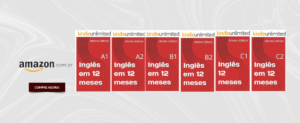Bem-vindo à aula sobre “Describing Situations”. Nesta lição, você aprenderá sobre como descrever situações, utilizando várias estruturas gramaticais e vocabulário apropriado. Vamos cobrir os conceitos mais comuns e como aplicá-los em diferentes contextos.
Descrevendo Situações
Descrever situações envolve explicar claramente o contexto, os eventos e as emoções relacionadas. Aqui estão algumas estratégias importantes para descrever situações:
- Usar detalhes específicos: Incluir informações precisas sobre o que aconteceu.
- Contextualizar: Fornecer o pano de fundo ou a situação geral.
- Descrever emoções: Explicar como as pessoas envolvidas se sentiram.
- Usar conectores temporais: Palavras como “primeiro”, “depois”, “enquanto”, “finalmente” para organizar a descrição.
- Descrever reações: Explicar as respostas das pessoas aos eventos.
Exemplos de Frases Descrevendo Situações
- Detalhes específicos: We arrived at the park at 10 AM and started setting up the picnic.
- Contextualizar: It was a sunny day, perfect for an outdoor event.
- Descrever emoções: Everyone was excited and looking forward to spending the day together.
- Usar conectores temporais: First, we played some games. Then, we had lunch. After that, we went for a walk.
- Descrever reações: The kids were thrilled when they saw the playground.
Exercícios
Parte 1: Complete as Frases com Detalhes Específicos
- We arrived at the park at ____ and started setting up the picnic. (10 AM)
- The meeting started at ____ and lasted for two hours. (9 AM)
- She moved to the new apartment on ____ and began unpacking immediately. (Monday)
- They went on vacation to ____ and enjoyed the beach. (Hawaii)
- He bought a new car, a ____ model. (red Tesla)
Parte 2: Forneça o Contexto para as Situações
- It was a sunny day, perfect for ____.
- The office was busy with everyone ____.
- The city was decorated with lights for ____.
- The restaurant was crowded because ____.
- The school was quiet as ____.
Parte 3: Descreva as Emoções
- Everyone was excited and ____.
- She felt nervous because ____.
- They were thrilled when ____.
- He was disappointed that ____.
- We were relieved after ____.
Parte 4: Use Conectores Temporais para Organizar a Descrição
- ____, we played some games. (Primeiro)
- ____, we had lunch. (Depois)
- ____, we went for a walk. (Após isso)
- ____, we watched a movie. (Finalmente)
- ____, we decided to go home. (No fim do dia)
Parte 5: Descreva as Reações
- The kids were thrilled when ____.
- She was surprised by ____.
- They were confused because ____.
- He was delighted to ____.
- We were shocked when ____.
Respostas
Parte 1: Complete as Frases com Detalhes Específicos
- 10 AM
- 9 AM
- Monday
- Hawaii
- red Tesla
Parte 2: Forneça o Contexto para as Situações
- It was a sunny day, perfect for a picnic.
- The office was busy with everyone preparing for the big presentation.
- The city was decorated with lights for the holiday season.
- The restaurant was crowded because it was a popular spot for dinner.
- The school was quiet as the students were taking their exams.
Parte 3: Descreva as Emoções
- Everyone was excited and eager to start the trip.
- She felt nervous because it was her first day at the new job.
- They were thrilled when they heard the good news.
- He was disappointed that his team lost the game.
- We were relieved after we finished the project on time.
Parte 4: Use Conectores Temporais para Organizar a Descrição
- Primeiro
- Depois
- Após isso
- Finalmente
- No fim do dia
Parte 5: Descreva as Reações
- The kids were thrilled when they saw the playground.
- She was surprised by the unexpected gift.
- They were confused because the instructions were unclear.
- He was delighted to receive the award.
- We were shocked when we heard the loud noise.




